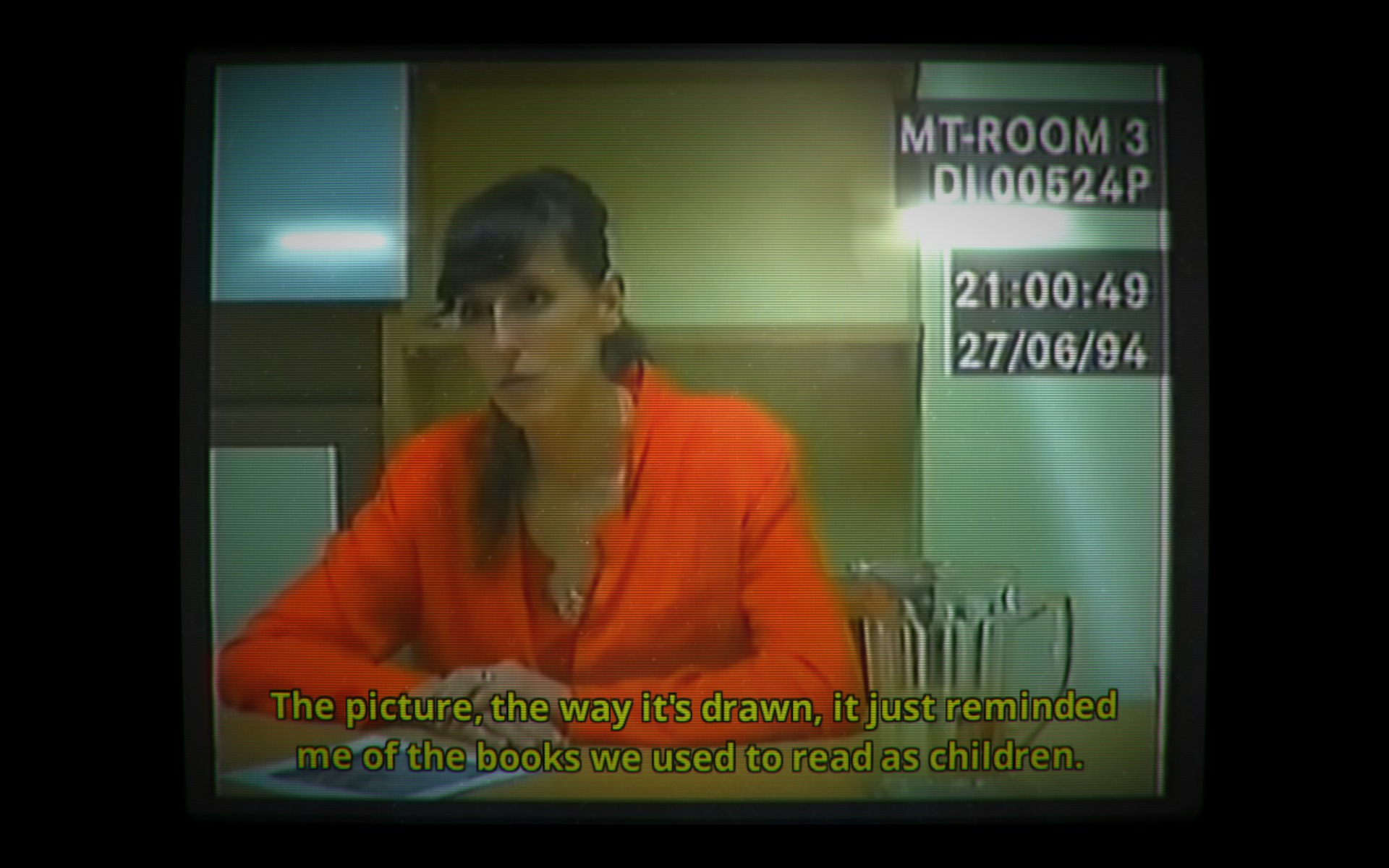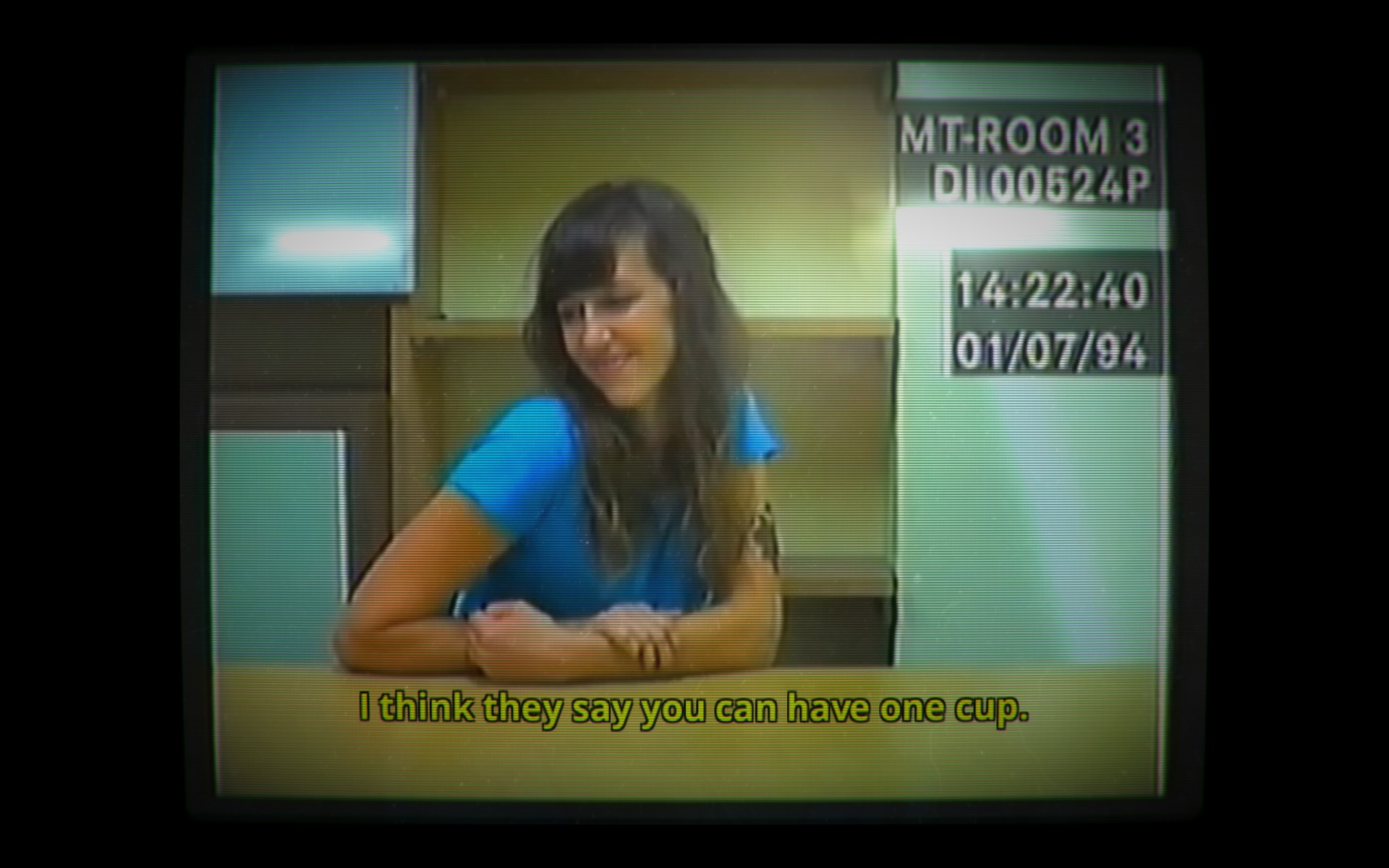
Have you played Her Story yet? Maybe you read our review, which said it “plays to the interactive strengths of the medium in a daring, imaginative way, trusting you to make sense of the scattered jigsaw pieces at your own pace”. If you have, you probably finished it in a single session, walking away from its murder mystery with pages of scrawled notes and your head boiling with follow-up questions for creator Sam Barlow and actress Viva Seifert.
Or maybe you haven’t. Perhaps you have a borderline allergic reaction to narrative games which rely on FMV. After all, there are good reasons why they stopped making those. Either way, this interview won’t contain spoilers, but hopefully will shed light on the creative process behind Her Story, the reaction so far, the influence of Serial, what that [redacted] was doing in the interview room, and whether there’s even a definitive solution to be found.

I spoke with Barlow and Seifert over Skype last week, which turned out to be the first time the pair had had a chance to catch up since shooting her scenes. I begin by asking what made Barlow explore FMV, given that it’s such a maligned technique. “I wanted to do something police procedural,” he explains, “and I honed in on the idea of the interview room being a constrained situation that was very interesting. It’s the kind of situation that games don’t necessarily explore normally.”
It’s easy to see why games avoid that kind of dialogue-heavy setting. First, there’s the problem of how to create interaction in something fundamentally about listening to people talk, which Barlow solved by keeping the interview clips short and creating a database for the player to search as the mystery unfurled. Second, there’s the technical challenge of taking an actor’s performance and translating it into a game engine without losing nuance.
Barlow had become frustrated by that process during his work on the Silent Hill series and the unreleased Legacy of Kain: Dead Sun. He would spend days with the cast in leotards and makeup on set, only to then go away and wait for the data to be turned into something useable in the engine. “You’d have animators spend a couple of weeks tweaking things and then saying, ‘Oh, actually the facial rig doesn’t allow us to do a quirky smile like that,’” he remembers.

It was during Legacy of Kain: Dead Sun that Barlow and Seifert met, working together intermittently for a year before the game’s cancellation. She says of that time: “I could sense his frustration when it came to the motion capture. There would be electricity in the room when we nailed a scene, and I could tell it was going to be quite frustrating to recreate that.” The answer was clearly not more mo-cap. Having had the initial idea for Her Story, it percolated in Barlow’s brain for a while before the solution to just use video arrived.
Making contact
There’s a comparison to be made with the way L.A. Noire tackled similar problems, albeit at the opposite ends of the budget spectrum. Barlow describes L.A. Noire as “a brilliant example of someone knowing what the problem was, and desperately trying to solve it, but the solution being this wonderfully arcane, strange way of doing it.” The actors in Rockstar’s grand folly had their startlingly detailed facial performances bolted onto separate body data, the result of which was a one-way trip to the uncanny valley. In contrast, Barlow’s solution for Her Story—essentially that if you want something to look like video, you may as well shoot video—was elegant, cheap, and quick to turn around.
Keep up to date with the most important stories and the best deals, as picked by the PC Gamer team.
Her concern was: "How the hell am I going to learn eighty pages?"
Two years after they’d last talked, he contacted Seifert out of the blue to ask her to audition. “Of course I was interested,” she says. “Instantly, I wanted to know more. But what I didn’t realise is that I was the only character, so it was quite a lot of pressure when I finally got the script.” Seifert wasn’t surprised by the FMV approach, and already knew Barlow was a great writer, but her concern was: “How the hell am I going to learn eighty pages?”
According to Barlow, that was the condensed version. “I had a script where I’d formatted each scene on a different page, and that came to like 300 pages. I sent that to Viva and she was like, ‘No! What the fuck is this?’ I said wait a minute, I’ll just change it to 10pt Courier, delete those, there you go... It’s only 80 pages now. You just have to hold an entire feature film in your head and you’re the only character. That’s fine, right?”
With over two decades covering videogames, Tim has been there from the beginning. In his case, that meant playing Elite in 'co-op' on a BBC Micro (one player uses the movement keys, the other shoots) until his parents finally caved and bought an Amstrad CPC 6128. These days, when not steering the good ship PC Gamer, Tim spends his time complaining that all Priest mains in Hearthstone are degenerates and raiding in Destiny 2. He's almost certainly doing one of these right now.


